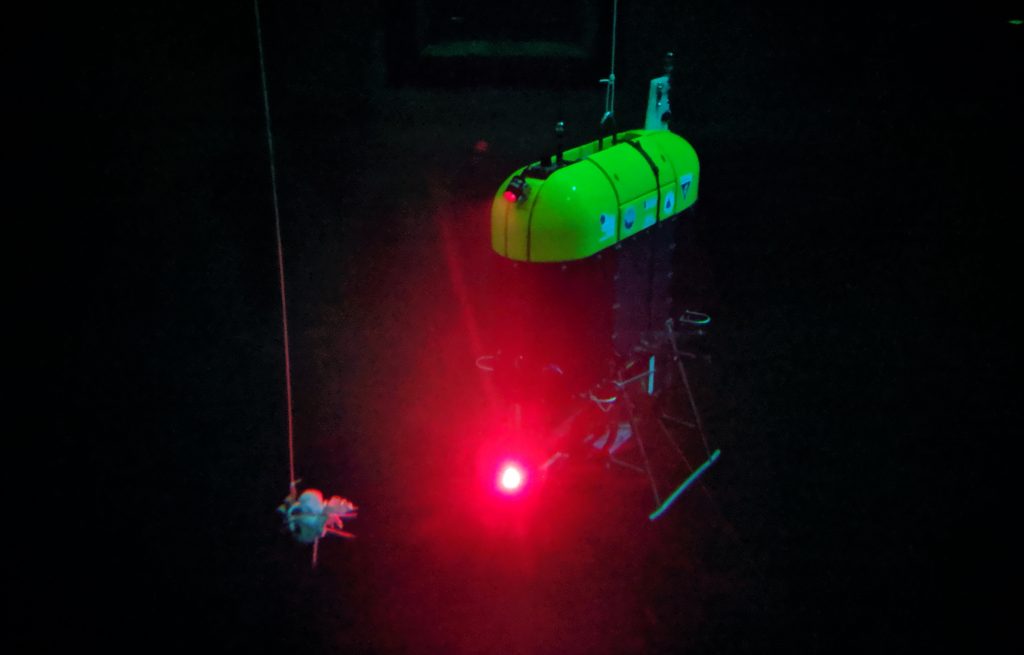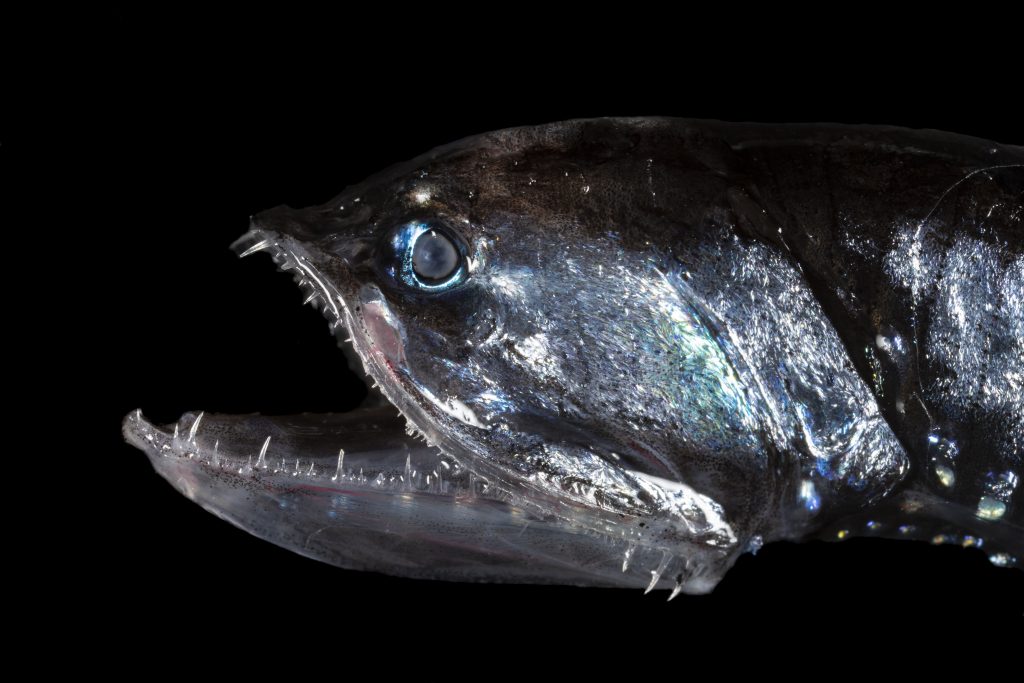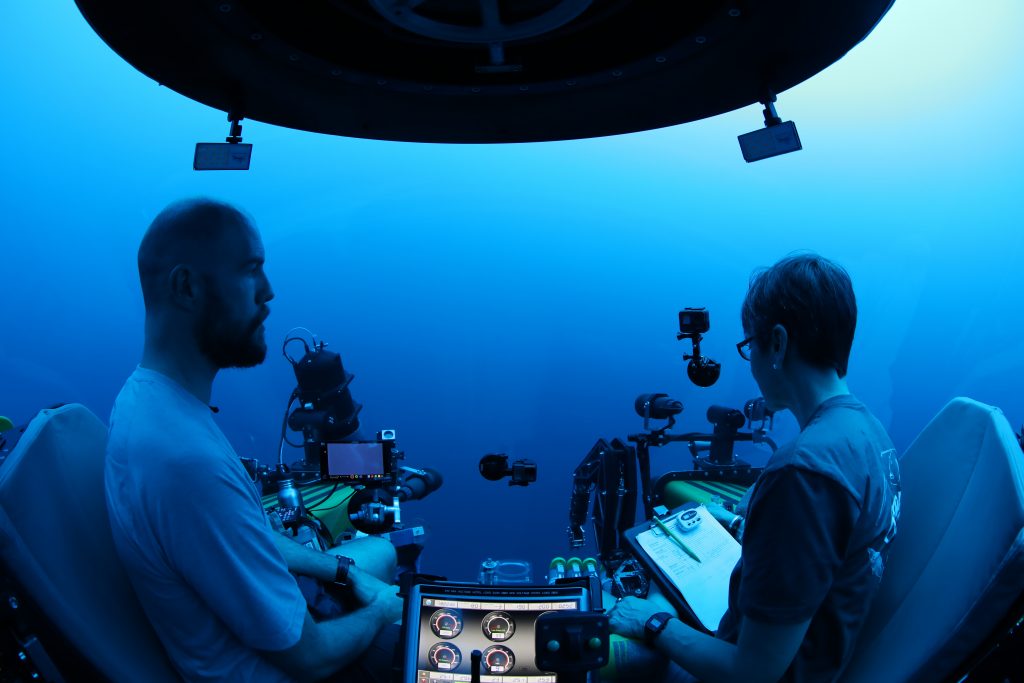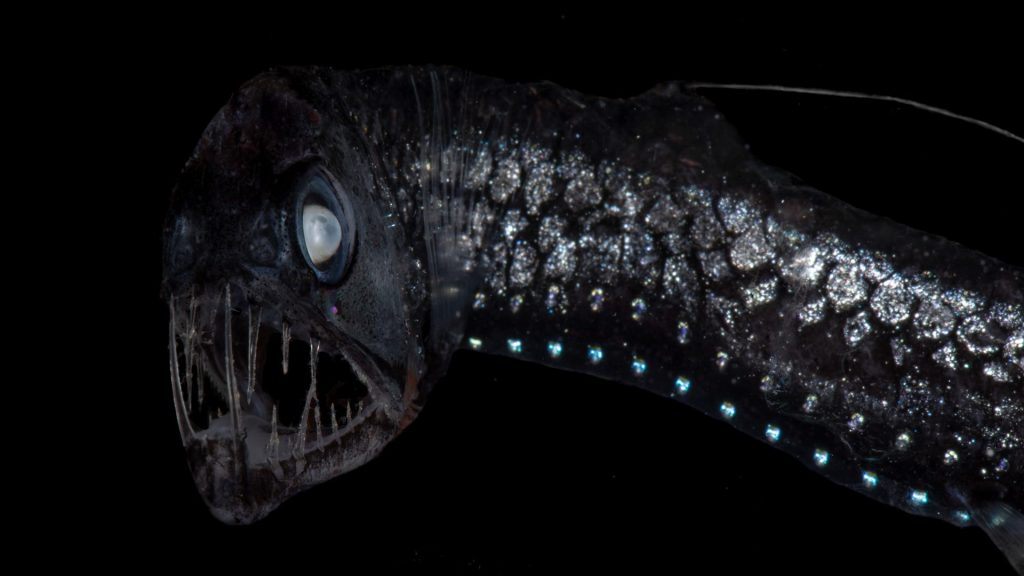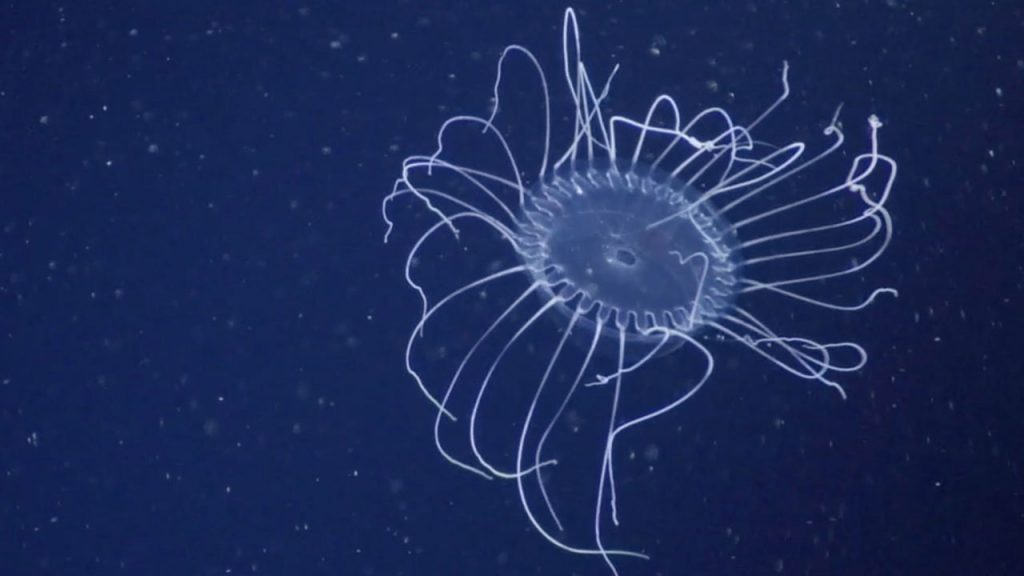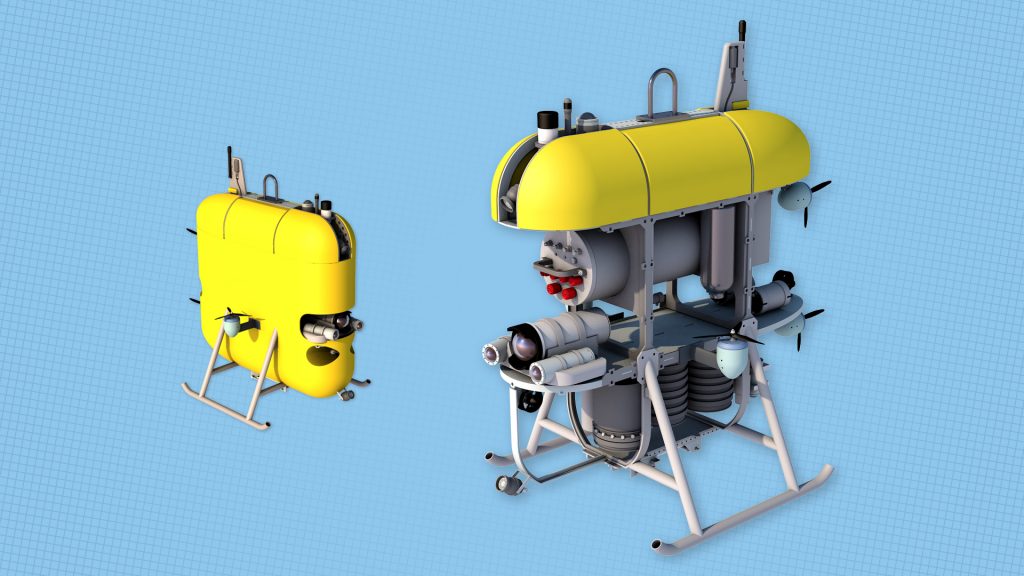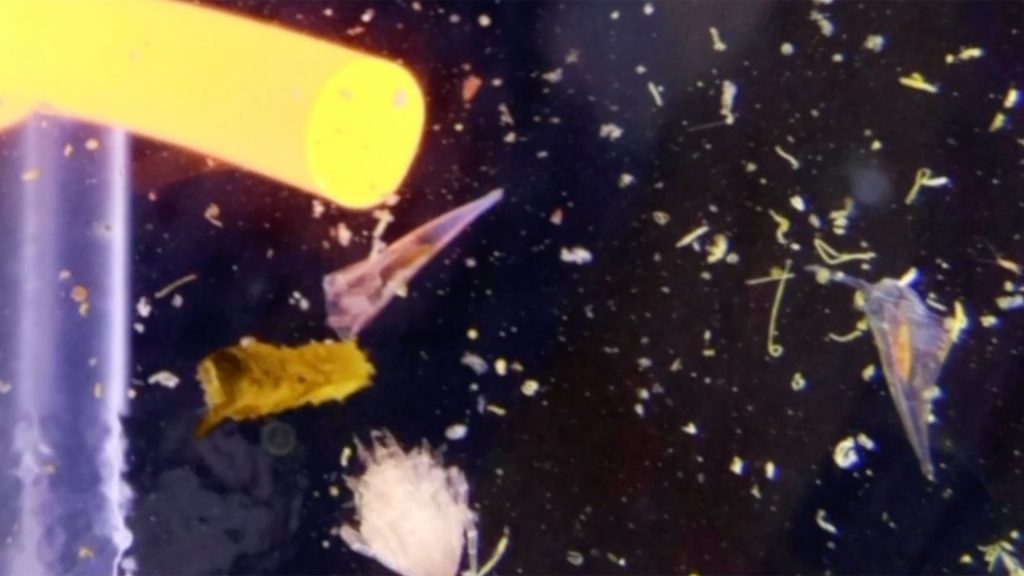Posts by Kathryn Baltes
Mesobot Dives into the Twilight Zone for the First Time
The newly developed deep sea robot, Mesobot, dove down to 300m for the first time last week during a successful test and evaluation cruise off Monterey Bay. Mesobot is designed to let scientists observe the twilight zone by autonomously tracking individual animals for hours or even days without disturbing the environment or disrupting their behavior.
Read MoreDiscovering the Ocean Twilight Zone with Joel Llopiz
Most life forms in the twilight zone are tiny—a few inches or less—but even the smallest twilight zone inhabitants are…
Read MoreEntering the Ocean Twilight Zone with Heidi Sosik
It is hard to describe what it’s like to physically travel down to the twilight zone. In addition to extraordinary…
Read MoreFish with Flashlights
Down in the dark and shadowy mesopelagic layer of the ocean, countless species—bristlemouths, lanternfishes, jellies, and others—have a natural ability…
Read MoreBringing Light into Darkness
Oceanographers studying creatures in the ocean twilight zone are facing an optical dilemma. They need to observe the fish in order to…
Read MoreA New Paradigm for Funding Ocean Science
Woods Hole Oceanographic Institution is embarking on a journey to explore and understand one of our planet’s last hidden frontiers—the ocean twilight zone (OTZ), a shadowy region far below the ocean’s sunlit surface. The OTZ project is WHOI’s first major research initiative supported by a new, disruptive funding model: The Audacious Project.
Read MoreThe Twilight Zone Begins to Materialize at the UN High Seas Negotiations
Biodiversity Beyond National Jurisdiction second session at the United Nations General Assembly in New York. From left to right; Kristina…
Read MoreMesobot, Follow that Jellyfish! New robot will track animals in the ocean twilight zone
The idea for the Mesobot sprang from a somewhat tongue-in-cheek request. Dana Yoerger, a scientist and engineer at Woods Hole Oceanographic Institution, was having a chat with his WHOI colleague Larry Madin—a marine biologist. Madin spent much of his career scuba diving to get close to his research subjects: gelatinous animals such as jellyfish and salps.
Read MoreChasing Ocean ‘Snowflakes’: New devices measure particles with key role in climate change
Below the ocean’s surface, sunlight quickly grows dim. But if you could shine a flashlight through the watery darkness, you might find yourself in an unexpected blizzard: a tempest of tiny underwater particles known as marine snow.
Read MoreA MINION’s-eye View of Marine Snow
A MINION’s-eye View of Marine Snow from Woods Hole Oceanographic Inst. on Vimeo.
Read More






